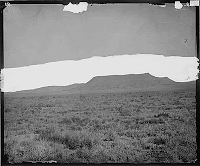 Early in the month of October [1886] President Morgan visited the North Georgia Elders at Rome, and later other Elders of the same state met in Polk county. The Elders and Saints of East Tennessee were visited by President Morgan directly after that. Other than this nothing of importance transpired during this month.
Early in the month of October [1886] President Morgan visited the North Georgia Elders at Rome, and later other Elders of the same state met in Polk county. The Elders and Saints of East Tennessee were visited by President Morgan directly after that. Other than this nothing of importance transpired during this month.November was unusually dull, several Elders arriving for appointment to fields of labor being the only important work done. The Elders were working faithfully, and in some cases they met opposition. The year closed in peace to all the Elders, in spite of some threats in parts.
The year 1887 opened favorable to the work. The brethren were opening new fields in many of the states which was resulting in new friends for the Gospel. President Emery, of the Mississippi Conference, was the target of religious libertines during the month. Upon one occasion they took him into some woods, after abusing him considerably, and there held a consultation whether it were best to do him bodily harm or to expel him from that county, that he might no more be able to exercise his rights there an an American citizen. Disagreement arose among the members of the mob, so it was decided to let him go unharmed, but still have the penalty of death over him if he did not leave the county to return no more.

In the early part of February President Morgan returned from the west, where he had gone the previous November. He visited Nashville to see what was being done with the bill that prohibiting [sic] the preaching of polygamy, put before the legislature by State Senator Simmerly [sic]. The bill was practically the same as the one of 1884. It was referred to a sub-committee, with instructions to frame a new one, and there the matter rested.
Active preparations were being made for the emigration of a large body of Saints, who were very desirous of going to the west. The people sold their farms and implements, making every effort to join the company. On the first day of March a few left Chattanooga, and as they journeyed westward they were joined by others, as well as by released Elders, until upon reaching Memphis, they numbered one hundred and seventy-five. The party was in charge of President Morgan.
Through Hon. John T. Caine [delegate to the U.S. House of Representatives from the Territory of Utah] several thousand copies of congressional speeches were received by the Elders at the office. The subject of the speeches was "Mormonism." All this matter was freely distributed among the people of the south. This resulted in removing considerable prejudice and giving the Elders better opportunities to gain access to those who would listen to their message.
At the close of this month a mission report was made, which showed ninety-two Elders travelling in the field. There were twenty-eight organized branches and a membership of 1,084—a very credible showing for that time. Prospects were very bright for a great work to be done in the ensuing six months.
In April several Elders were released to return home, and others arrived to be put to work in the different conferences. Elders Snow and William Rich, of the North Carolina Conference, were sent among the Cherokee Indians in Haywood, Swain and Jackson counties to endeavor to gain a foothold among that tribe. In reporting their labors the brethren said the Indians were very suspicious of them, and, seemingly, their work was of little avail; but they were determined to stay and do their duty.
During May the work continued on uneventful, save the arrival of Elders and the emigration of some Saints. Literature began to be recognized as an effective means of reaching the people; accordingly, much was prepared and sent to the Elders for distribution. The result was gratifying. With the publication and proclamation of the Gospel, the icebergs of prejudice and intolerance began to melt gradually, to leave a fertile field for future work.
Latter Day Saints Southern Star, Vol. 1, No. 36, Chattanooga, Tenn. Saturday, August 5, 1899, pp 281-82.
The newspaper article is from the New York Times, January 12, 1887, p 1. Picture of the Smoky Mountains in Jackson County, North Carolina, from www.flickr.com/photos/auvet/3017840580/.











